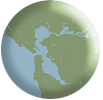Table 3. Specific recommendations for science to support development of habitat-type specific NNE assessment frameworks.
Habitat Type | Recommended Action | Priority |
All subtidal | Sponsor a series of expert workshops or develop an expert panel to develop a draft assessment framework based on indicators of phytoplankton (biomass, productivity, assemblage, cyanobacteria cell counts and toxin concentrations) and dissolved oxygen | High |
Form a working group of Bay scientists to synthesize available data on factors known to control primary productivity in different regions in the Bay, developing consensus on relative importance of ammonium inhibition of phytoplankton blooms to Baywide primary productivity, and determining next steps with respect to incorporating ammonium into the NNE assessment framework for the Bay. | High | |
Consider a review of the Bay dissolved oxygen objectives, either Bay-wide or for specific habitat types such as tidally muted areas (tidal sloughs, managed ponds) | High | |
Un-vegetated Subtidal | Utilize IEP-EMP data to explore use of macrobenthos to assess beneficial use impairment in oligohaline habitats. Consider including biomass in the protocol to improve diagnosis of eutrophication or other nutrient-related beneficial-use impairment. Determine whether combination of indicators can be used reliably to diagnose eutrophication and other nutrient-related beneficial-use impairment distinctly from other stressors. | Low |
Submerged Aquatic Vegetation | Conduct studies to establish light requirements for the Bay seagrass species; | Low |
Collect baseline data to characterize prevalence of macroalgal blooms and other stressors on seagrass beds | Moderate | |
Evaluate the findings of statewide NNE studies characterizing effects of macroalgae on seagrass for applicability to the Bay | Moderate | |
Participate in statewide group to develop an assessment framework for eutrophication in seagrass, based on phytoplankton biomass, macroalgae, and epiphyte load. | High | |
Intertidal Flats | Evaluate the findings of studies characterizing effects of macroalgae on intertidal flats for applicability to the Bay | Moderate |
Participate in statewide group to develop an assessment framework for eutrophication in intertidal flats, based on macroalgae and other supporting indicators. | High | |
Tidally muted habitats - managed ponds | Synthesize existing DO oxygen data for tidally muted areas and collect baseline data primary and supporting indicators (macroalgal biomass and cover and phytoplankton biomass, taxonomic composition, and HAB toxin concentrations) in these habitats needed to make a full assessment of status of eutrophication. | High |
